Archive for March, 2011
The NYC Subway
The most powerful way to subvert capital is to generate production without any financial interest.
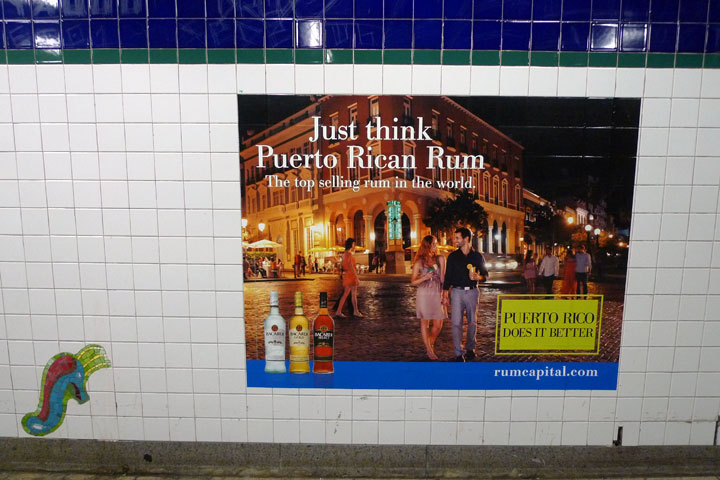
To work out of sheer inspiration, a genuine drive toward self-realization…
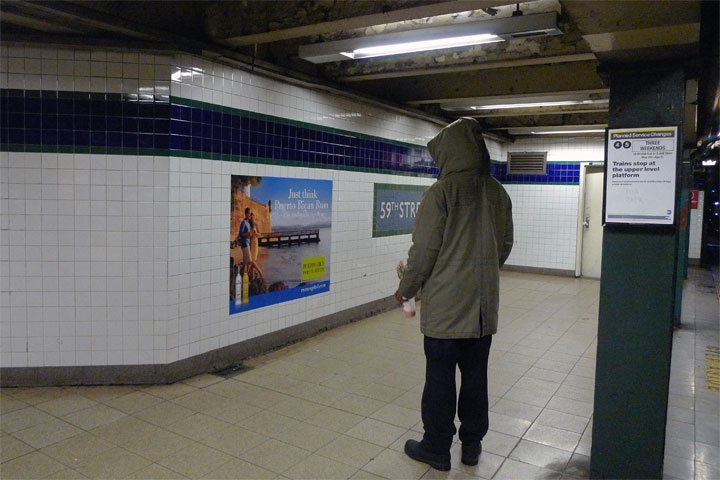
Only through a moderate amount of wealth is some amount of free time realized to conceptualize self-realization.
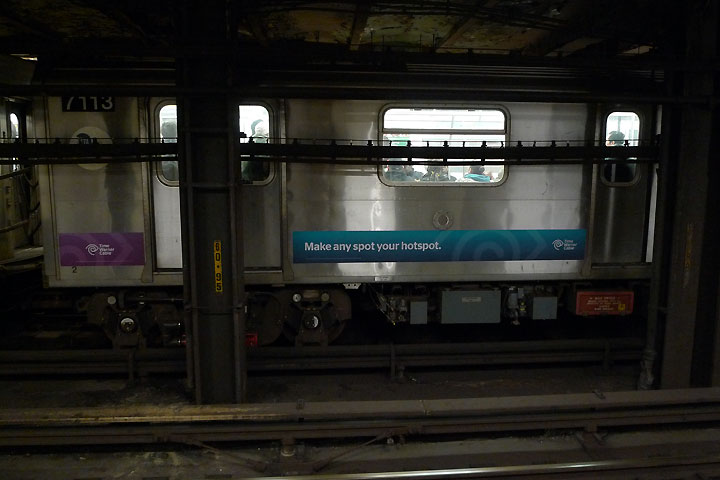
You are always a moving target, even where you are little more than hide.
Virtual Love, Feelings About the Web Lately
I had to take a bit of time out to create a small animation describing how I feel about online advertising and Capitalism’s consumption of the web…
If you’d like view it as a SWF (much larger, sharper and quicker download), CLICK HERE
Duke Riley at MagnanMetz Gallery
I’ve become a big fan of Duke Riley’s work. Riley combines historical research, public intervention and skilled craft to generate narratives that are immediately engaging and subtly layered and complex.

I Photoshopped the drawings pictured in this post in order to better see the detail that Riley executes in his graphic work; they are worth seeing in person whenever possible. Although the only work documented in this post is graphic representation, Riley works across media and he has gotten the most attention for his public interventions, such as “After the Battle of Broolyn” for which he built a replica of an 18th Century U.S. Revolutionary submarine “The Turtle” and set out on the Hudson to attack a ship, the Queen Mary 2 docked off Manhattan. The NYC Coast Guard hauled Riley and his submarine from the Hudson.
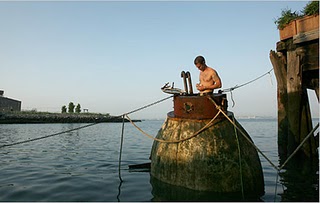
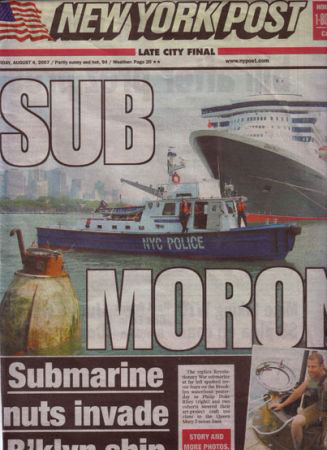
The latest exhibition presents two installations revolving around two separate historical narratives – the hobbo ballad “An Invitation to Lubberland” and Petty’s Island, a Citgo owned island in the Delaware River.
I didn’t have the patience to watch the videos portraying An Invitation to Lubberland which presented a late 19th century/ early 20th century dressed man running around underground tunnels. I was much more drawn to the second work presented “Reclaiming the Lost Kingdom of Laird” which consists of an intervention upon a Citgo fuel storage tank and a reclaiming of the island by the Laird Kingdom Liberation Army that published a letter to Hugo Chavez on the Huffington Post reclaiming Petty’s Island.
The project includes a giant portrait of Ralston Laird painted onto the top of a storage tank, interviews with the great great grandson of Ralston Laird, artifacts of the Laird family and beautiful drawings that re-imagine the island. (Ralston Laird was an Irish immigrant who once lived on Petty’s Island and claimed himself king of Petty’s Island.) Below are a few closeups of the large scale drawing pictured above.
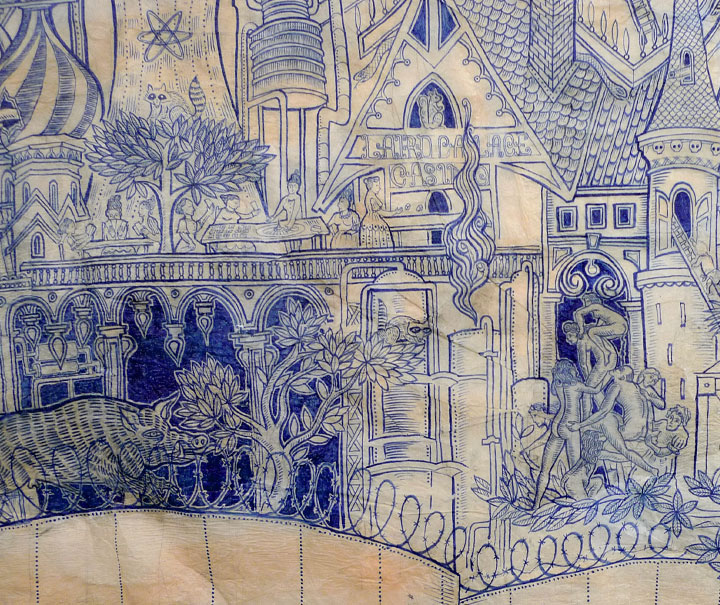
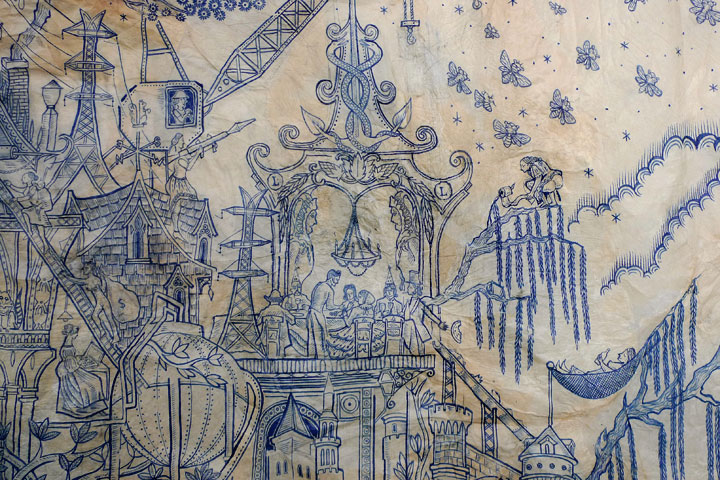
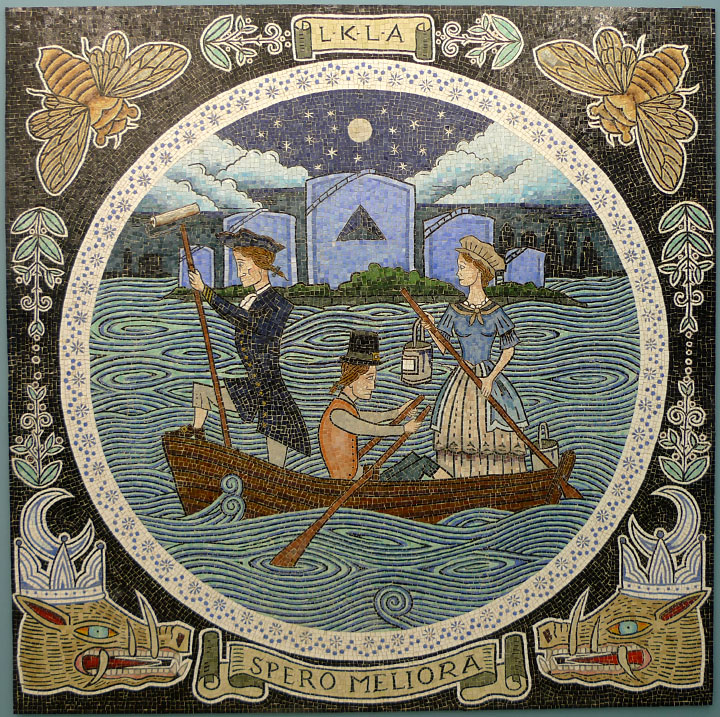
Duke Riley goes all out with his work. He ventures across boundaries to realize work that must be taken seriously due to the earnestness of execution. My only point of critique is that his graphic work is consistently in line with hipster subculture aesthetics informed by past eras of Americana and I would much rather see Riley establish his own visual language. Although the visual styles are generally informed by the era of the topic that he tackles it seems to be the same early 19th century U.S. graphic style that he recreates. Perhaps what I enjoy the most is that Riley really seems to enjoy his work thus the research leading to dense narratives that are conceptually and visually engaging.
…OUT OF HERE: The Veterans Project, Wodiczko at Galerie Lelong
Since hearing that Krzysztof Wodiczko had a new installation at Galerie Lelong in Chelsea, NYC, I had been looking forward to seeing the show, unfortunately it was underwhelming. I’m a fan of Wodiczko, particularly his earlier works – the vehicles and other sculptural objects activated by participatory street interaction. …OUT OF HERE: The Veterans Project is a black box installation that presents a row of windows framing a blue sky. The windows and sky are video projections near the ceiling of the gallery and the intention is to place the viewer within an architectural space, looking out to the sky. Throughout the gallery ceiling speakers are suspended so that the viewer can hear street sounds.
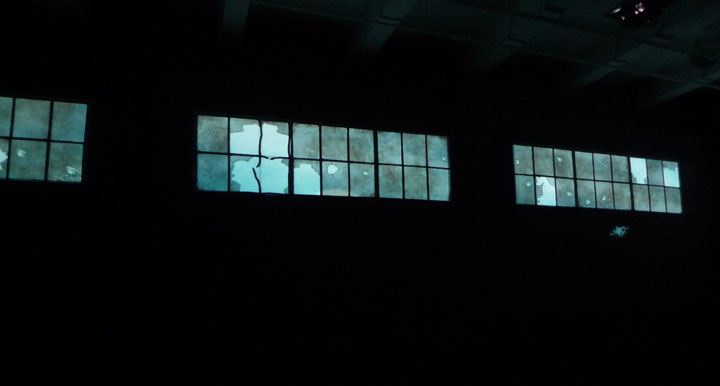
The installation is essentially a video loop. Initially all the windows are intact and one can hear vehicles and voices, a background of street sounds. Then one hears a helicopter approaching and along the windows projected onto one wall of the gallery, the black silhouette of the helicopter appears and moves across the windows. Then from speakers opposite of the helicopter projection, one hears a ball bouncing and sees the ball reach the top of its arch along the a row of windows. The primary sounds are that of a boy playing with a ball that goes on to break one of the windows, there is some parental yelling in Arabic as the boy plays. Soon there are new voices, in English, military voices giving orders and searching for a target followed by the sound of bullets. There is shooting, windows breaking, people screaming, a cacophony of war like sounds followed by silence and then the loop restarts…
I wish that I could say that the installation effectively transported me into a new space and presented me with the horror of warfare and the sense of being a helpless target, but as the silence ended by the sound of the helicopter and the sequence of virtual events reinitiated, it all just seemed like trite theatrics. Within the confines of a blue chip gallery in Chelsea New York, the installation rings hollow and one is left wondering what is the point?
Wodiczko’s work has always employed a sense of theater and monumentality, whether it’s the quirky designs of his sculptures or the larger than life video projections. But the theatricality of large scale projection on the street has an innate immediacy whereas within the confines of a commercial gallery, the immediacy is muted. According to the exhibition’s press release, the installation is “based on interviews and encounters with veterans and civilians from Iraq and Afghanistan,” I wonder what these people’s reactions are to their experiences being represented in this form. Is it meaningful? Does the installation present some potentiality in relation to their lives? Or is it merely a slick gallery display?
In general, I question the goal of presenting politicized art in commercial galleries or in the white box in general. Wodiczko’s installation left me with a strong sense of the irrelevance of gallery art in relation our world and the complex issues that our present society confronts or chooses to ignore or misuse.
Multi-car Accident at Eastern Pkwy & Washington
There are two things that I fear when I ride my bike around the city – taxis and cop cars, because they are both unpredictable and dangerous. This morning around 8:20am, I heard a police siren for two seconds and then a major crash followed by a second crash. When I looked out my window, I saw an undercover police car badly damaged and smoking nearing the center of the Washington and Eastern Parkway intersection. I don’t know why it kept moving as the initial hit seemed to occur at the commercial lane that runs parallel to the main lanes, but slowly moved into the main intersection, perhaps to stop traffic and stop possibility of further accidents. One thing that seemed apparent is that the police car was most likely at fault for the entire accident as it switched on it’s siren to try and catch a red light and make it through a very dangerous intersection. This regularly happens at this intersection as it’s basically three intersection in one. I hope that the police camera caught the whole thing.
What really angered me is that when accidents happen at this intersection, police, firetrucks, ambulances can take 15-20 minutes to arrive. When it was a cop car at the heart of the accident, it took three minutes to have eight cop cars, two firetrucks and two ambulances all at the intersection, it was ridiculous.
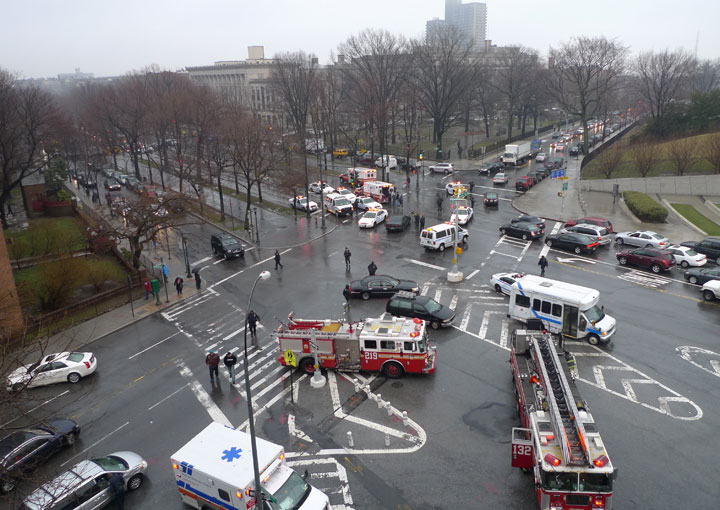
One SUV with a mother and daughter was spun into my building – 175 Eastern Pkwy.
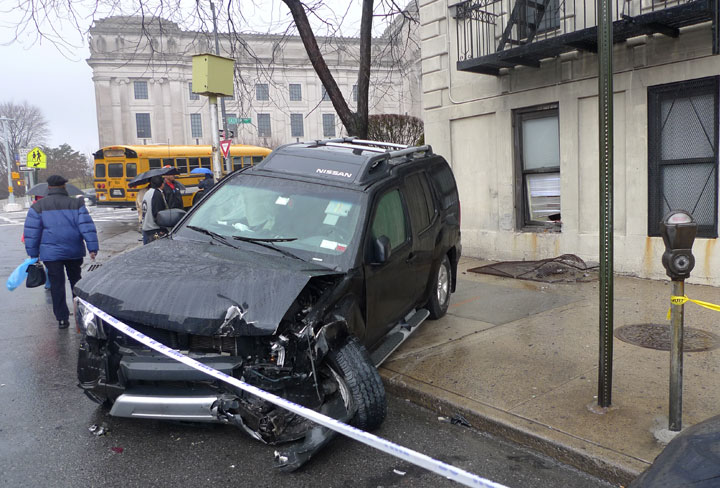
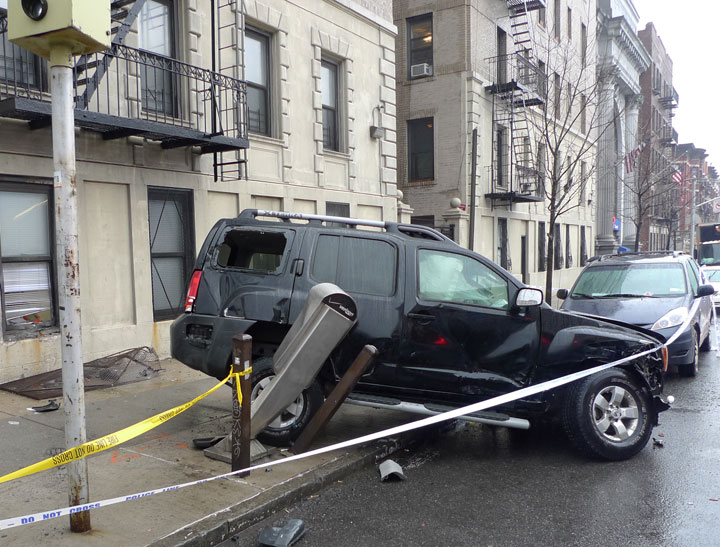
And it was all cleaned up within an hour… amazing, the love that cops show for one another.
“The Un-accounted Body in Performance” by Laura V. Sandez
Scholar and writer recently published an essay titled “The Un-accounted Body in Performance: Who is the Subject of the Rights of the Illegal Alien?” in the current publication of the academic journal LLJournal in which she discusses the art projects VOTEMOS.US and Design for the Alien Within.
Following brief abstracts of the two projets, Sandez opens the essay with the following paragraph:
Both Votemos.us and Design for the Alien Within imagine treating the illegal alien as if he/she matters; Votemos.us considers their political substance through hypothetical voting rights, and Design for the Alien Within considers their safety. It is not my intent to provide an in-depth analysis of either Votemus.us or Design for the Alien Within, but to trace the specific phenomenon of the unaccounted body as it is articulated in each project2. These artistic interventions, which have the unaccounted body as their subject/theme, present a space that has yet to reach their subject—whether as audience or as a catalyst for a better life making their situation better—and the hypothetical situations they evoke. Giving voting rights to undocumented people could not occur when their civic being has not yet been accounted for, and designing furniture for the hiding of bodies cannot be functional if people do not feel a real need to hide undocumented immigrants.
Read the entire essay on the current volume of the LLJournal, Vol5, No 2